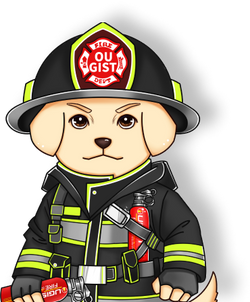Fires are categorized into different classes based on the nature of the fuel involved. One of the most dangerous types of fires is the Class C fire, which involves electrical equipment, appliances, and wiring. This class of fire is particularly hazardous because using the wrong extinguishing agent can result in electrical shock or further damage to sensitive electrical components. Understanding the best way to combat Class C fires is crucial for ensuring safety and minimizing damage. In this blog post, we will explore why CO2 extinguishers are the optimal choice for Class C fires.

Understanding Class C Fires
Class C fires are unique because they involve electrical equipment, which presents a risk of electrical shock. Common sources of Class C fires include:
- Electrical panels and circuit breakers
- Computers and servers
- Appliances such as microwaves and refrigerators
- Wiring and electrical outlets
The presence of electricity means that using water-based extinguishers is not only ineffective but also dangerous. Water conducts electricity and can lead to severe electrical shock or short-circuiting, potentially exacerbating the fire.

Why CO2 Extinguishers are Ideal for Class C Fires
1. Non-Conductive Nature: Carbon dioxide (CO2) extinguishers are specifically designed for use on electrical fires. CO2 is a non-conductive gas, which means it does not carry electrical current. This property makes it safe to use on electrical fires without the risk of electrocution.
2. Oxygen Deprivation: CO2 extinguishers work by displacing oxygen around the fire. Since oxygen is one of the three elements required for a fire to burn (along with heat and fuel), removing it effectively suffocates the flames. This method is particularly effective for Class C fires, where the fuel source is electrical.
3. Cooling Effect: In addition to suffocating the fire, CO2 extinguishers also have a cooling effect. The discharge from a CO2 extinguisher is extremely cold, which helps to cool down the burning materials and further prevents the fire from spreading.
4. Minimal Residue: One of the significant advantages of CO2 extinguishers is that they leave no residue. This is crucial for electrical fires because residues from other types of extinguishers can damage sensitive electrical equipment. CO2 extinguishers ensure that once the fire is out, the equipment is left clean and dry, reducing the need for extensive cleanup and making it easier to assess any damage.
How to Use a CO2 Extinguisher Safely
Using a CO2 extinguisher correctly is essential for effectively putting out a Class C fire. Here are the steps to follow:
- Pull the Pin: This unlocks the operating lever, allowing you to discharge the extinguisher.
- Aim the Nozzle: Direct the nozzle at the base of the fire. It’s important to aim low, as the CO2 will spread out and cover the fire.
- Squeeze the Lever: This releases the CO2, which will come out with force. Make sure to keep a firm grip on the nozzle to direct the flow accurately.
- Sweep Side to Side: Move the nozzle from side to side across the base of the fire until it is completely extinguished.
Additional Considerations
While CO2 extinguishers are highly effective for Class C fires, it’s essential to have them regularly inspected and maintained to ensure they are in good working condition. Additionally, everyone in a workplace or home environment should be trained on how to use them properly.
It's also worth noting that CO2 extinguishers can be used on Class B fires (flammable liquids) as well, providing versatility in fire safety equipment.


